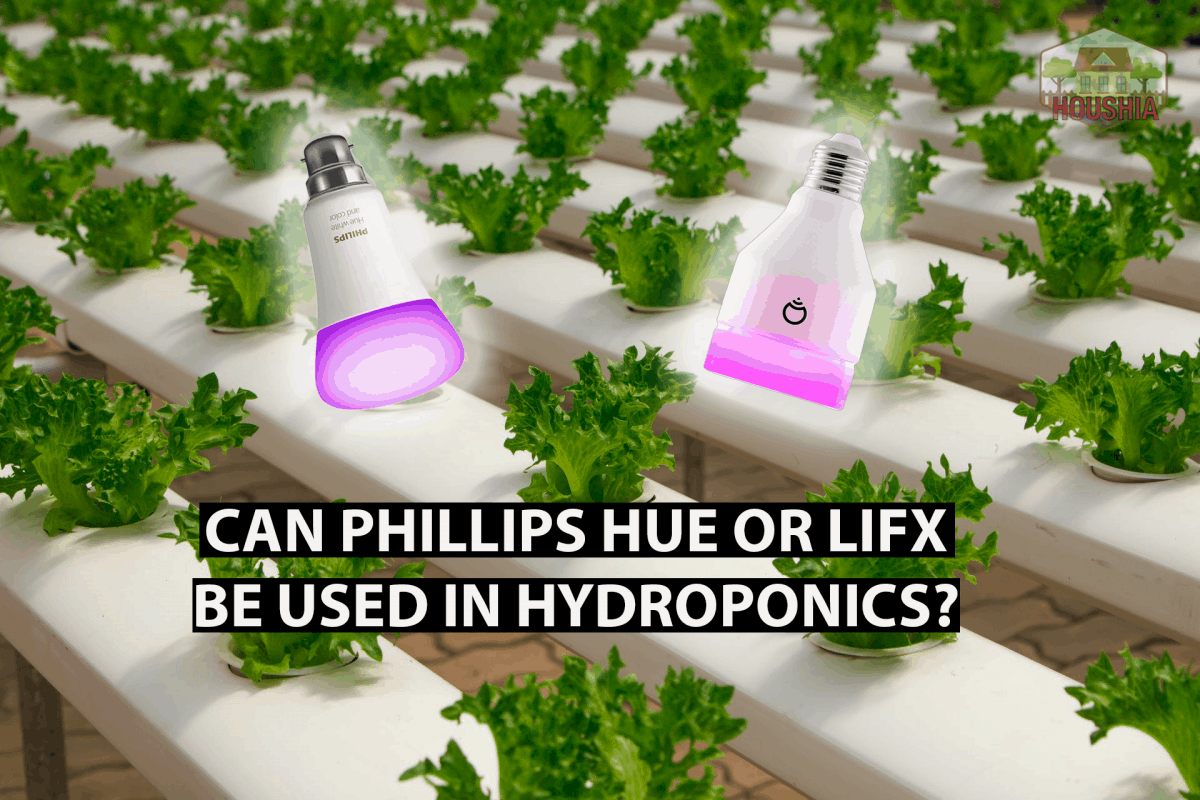If you’ve ever been sleepy and drank water instead of coffee, you’ll know what Hue and LIFX bulbs are like for hydroponics. When you drink water, you’ll feel awake for a few seconds, but moments later, you realize you really need coffee. Hue and Lifx bulbs are just like that. You may use them for hydroponics but they are not sufficient enough to properly support the growth of your indoor plants.
Can Hue and LIFX Bulbs Be Used For Hydroponics? No, by themselves, Hue and LIFX bulbs are insufficient sources of light for plants to grow healthily. Although there might be a few settings that will make them helpful to plants, it is still advised to purchase separate grow lights to provide for the plant’s need for sunlight.
Most of us hesitate to buy something expensive especially if there is a cheaper alternative. For example, you may be wondering why you should buy grow lights if regular LED lights you already have at home are enough. As you will learn in this article, when you opt out of grow lights, you also opt out of giving your plants the best chance to grow. So, if you want to learn about getting the right kind of lights and whether you can use Hue and LIFX bulbs with them, keep on reading.
The Importance of Light in Hydroponics
What Grow Lights are For
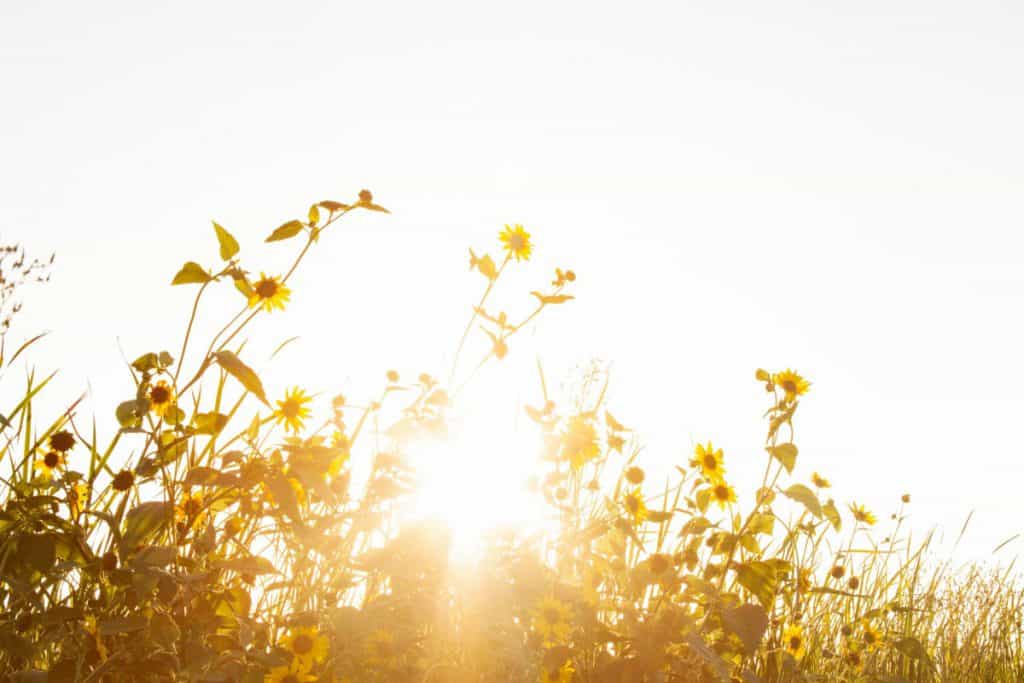
Grow lights are manufactured in order to imitate what the sun does for plants. With the increasing interest in indoor gardening today, grow lights have correspondingly become an important investment. This is because, through them, people can provide their plants with enough light and heat to grow healthily.
Years ago, the concept of grow lights has already been manifested through people’s use of incandescent lights to provide heat for plants. However, they soon found out that using this kind of light is ineffective because it has low light intensity. More than that, it does not accurately reflect the colors the plants need to grow so, naturally, it led to poor results.
LED Grow Lights and Their Colors
In order to understand what we need to look at when reviewing the effectiveness of Hue and LIFX bulbs for hydroponics, we first need to look at what LED grow lights today do for plants. Modern LED grow lights are known to have designs that are able to cover surfaces evenly. This is so that all plants under the light receive the same amount of heat and are all able to grow.
More than that, if you’ve ever seen grow lights, you might have noticed that when turned on, they emit a color that could be described as purple. In such cases, these grow lights are actually meant to produce the colors red and blue that are vital to plants’ health. To be more specific, red is essential for the plants’ food-making process (or photosynthesis) and to control your plants’ height development.
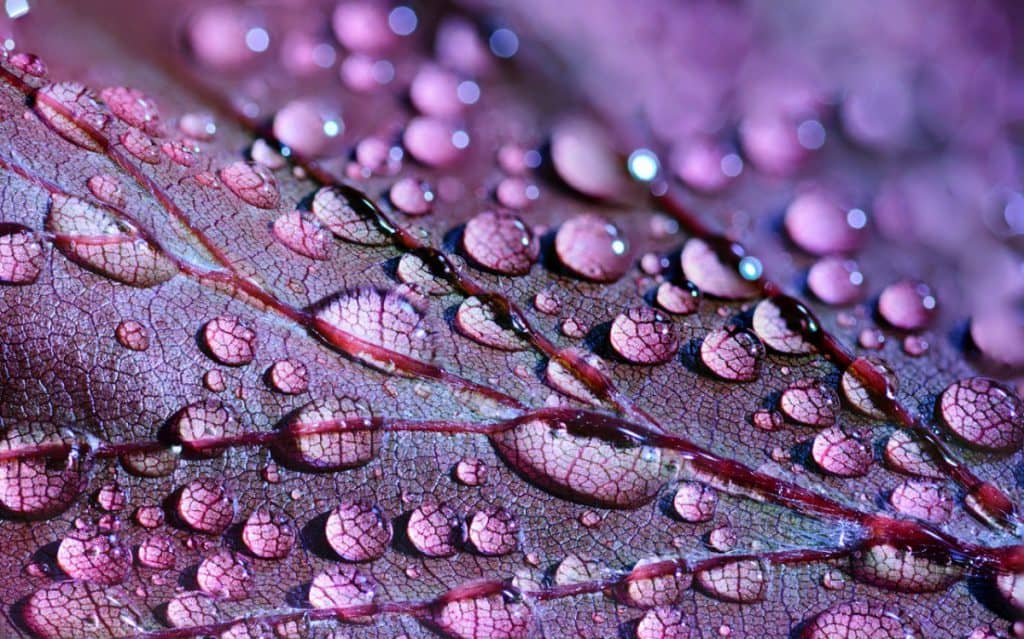
Generally, red signals your plants that they have enough light and that they don’t have to compete to grow fully. Blue light, on the other hand, is essential in chlorophyll production. Although this might sound a bit complicated to those who are not avid fans of biology, all you need to remember is that blue light helps your plants flower and develop their stems and leaves.
Although these two colors are the main ones to look out for, it is said that you may add other light spectrums (and even ultraviolet yields), if you want to provide additional support for your plants. However, these cost a lot to produce and, evidently, this is why most manufacturers only focus on producing popular LED lights that emit a purple light instead.
Using Hue and LIFX Bulbs for Hydroponics
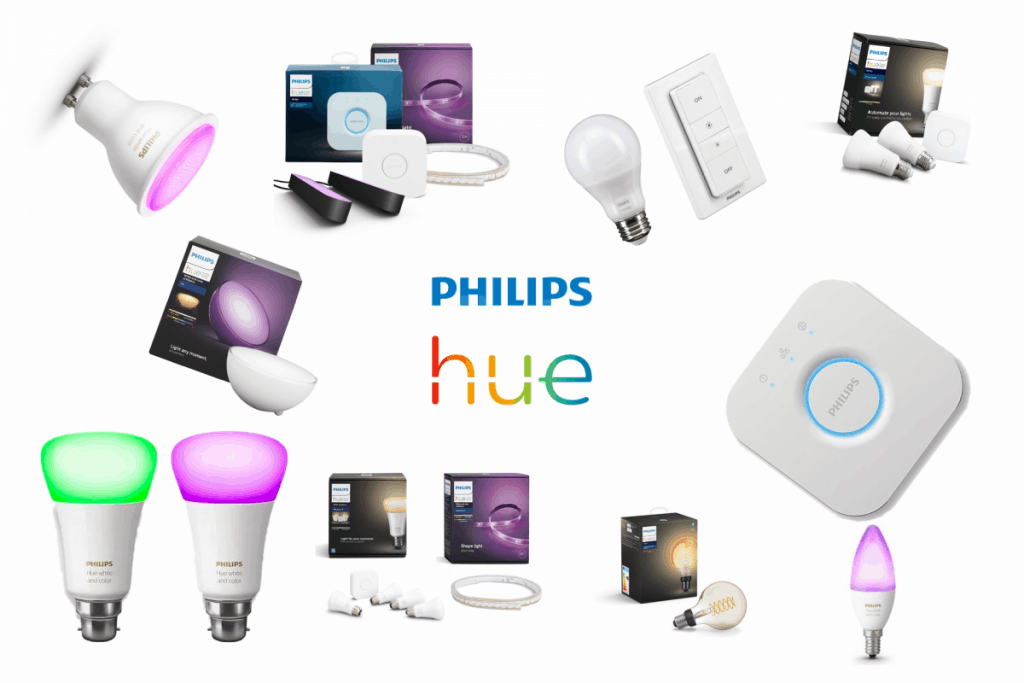
Why You Can’t Use Them on Their Own
Aside from color, what is also an important point that makes grow lights irreplaceable by other lights is that they provide light at very specific intensities. When these intensity “peaks” are not met, the light becomes almost useless to the plants. This is because it is only when they are at a certain level that lights perfectly mimic the sun. Thus, without these requirements, the lights will be of no help to the plant’s processes like photosynthesis or even chlorophyllic absorption.
This is the case for Hue and LIFX bulbs. However, one should not be immediately disappointed at these brands because they are actually not made for hydroponics. They are regular LED smart lights that do not have the design component that makes them useful for hydroponics.
Regular Smart Lights Vs. LED Grow Lights
Regular Smart Lights
With that said, it is worth noting that regular LED smart lights like Hue and LIFX, may reproduce some of the colors of the sun’s rays. However, since they are not exactly made for this purpose, it is hard to say that they can accurately provide the spectra of wavelengths that enable plants to naturally grow. This is why using regular smart lights for hydroponics is labeled somewhat similar to guesswork but because you never really know for sure if they are working.
More importantly, there are still no standards for smart LED lights like Hue and LIFX when it comes to areas like hydroponics. So, you’re not really sure how they compare to each other in terms of factors like wavelength and color spectrum. It might even be accurate to describe this process as something close to trial and error especially that different plants have different needs.
LED Grow Lights
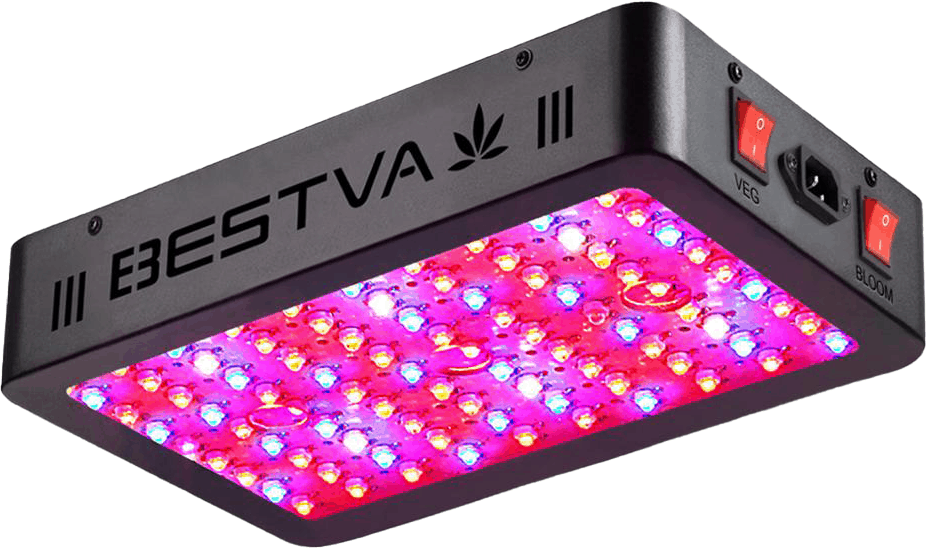
LED grow lights, on the other hand, really have standards when it comes to the wavelength and the color spectrum of the light. So, in comparison to just regular smart lights, LED grow lights are more accurate. Thus, there is no guesswork or trial and error involved when it comes to these lights. Furthermore, even if they do not reflect the complete spectra of lights, they provide the specific colors that plants need to grow. Evidently, if you purchase these lights, they will be much more effective because they are made for the purpose of assisting plants as the sun does.
Promising Results from Using LIFX Bulbs
Although there are no official statements from LIFX regarding the use of their bulbs for hydroponics, there is both an article and a Reddit thread about using LIFX for growing plants indoors.
Reddit Thread
On this Reddit thread, a user shares that LIFX has actually been effective in helping his tomatoes grow. An image is even attached showing the purple light emitting from LIFX bulbs onto the plants. This picture, however, does not exactly show how great the LIFX bulbs are working and how healthy the plants are. Furthermore, a comment on the thread serves as a reality check to this anecdote.
The comment reads “I actually contacted LIFX a while ago and requested to add a grow light feature in their app and also suggested a night mode as even plants prefer some sleep. They loved it and told me they’d look into it.” If this comment says anything, it is that LIFX, although effective for this one user and his tomatoes, is still not verified for everyone else’s use for hydroponics or for effectiveness for every other plant.
At the end of the day, LIFX could work for hydroponics but it is not meant to function that way. Thus, this is not really the wisest move you can make if you are looking into the organic and holistic growth of your plants. So even though they are working fine, LIFX bulbs are not yet actually meant to be used for hydroponics.
Article from Financial Review
In this Financial Review article, they used a LIFX bulb for their plants because they wanted to be able to control the color temperature. Furthermore, they wanted to install lights whose brightness can be controlled precisely throughout the day or night. They especially commended the feature of the LIFX app to set a mode called “Day & Dusk.” This setting allows the bulbs to change colors based on a timer so that it can mimic daylight during the day and then become dimmer at night.

It was also mentioned that when they make the lights dimmer, the LIFX bulbs serve more as a way “to light up the plant as a feature in the room” rather than to grow it. With our discussions on the lacking strength of regular smart lights, this might be the case even if the lights are set much brighter, like in the day. As mentioned above, we are never sure what is going on yet when it comes to the effectiveness of these lights because there are no set standards available.
The article also placed a disclaimer to their statement that LIFX puts out enough light for their plants to grow. They mentioned that the plants may be growing slower than they would have had they installed the proper (but more expensive) grow lights. So, price is another aspect that people might want to look into in the future when smart lights like LIFX and Hue officially add ‘use for hydroponics’ to the long list of benefits they already have.
Hue Lights
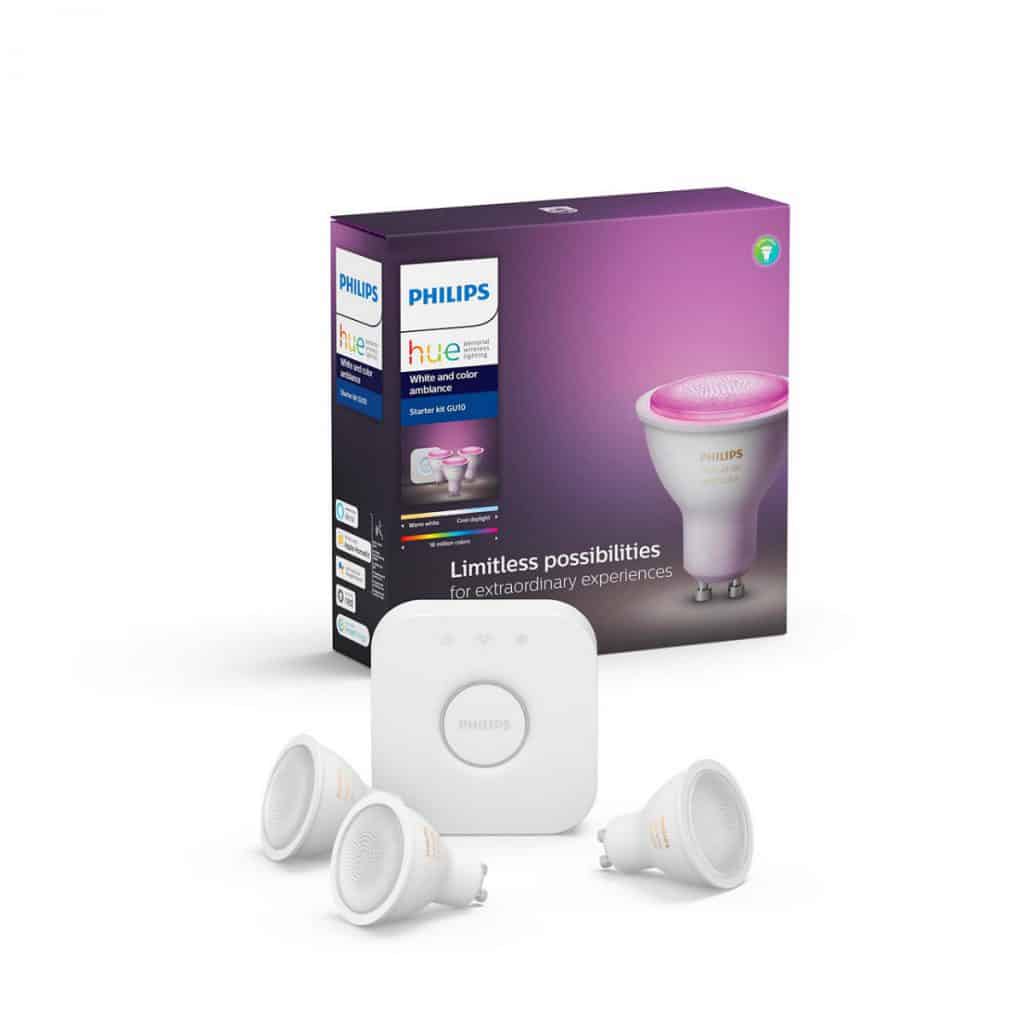
Unlike LIFX, Hue unfortunately has no success stories to tell online. So, this just goes to show that even if people are thinking about using Hue, they are discouraged by the mismatch of the product’s function and the need for lights that work for hydroponics.
The one Reddit thread that actually talks about using Hue with hydroponics just recommends contacting the company to ask whether it should work or not. The user’s explanation is that if it is not advertised to work that way, it probably won’t but, you can give it a try. It was also reiterated several times in the thread that Hue’s lights do not reach the intensity peaks that it should in order to mimic sunlight.
The Verdict on Regular LED Lights
So, when talking about regular LED lights, yes, technically, you can use them (like how LIFX actually has a few success stories online). However, the more accurate answer is still no because using lights like Hue and LIFX does not guarantee that the plants you grow indoors will grow healthy. They are not manufactured to ensure that plants will get the necessary light spectrum nor do they promise to assist the plants’ biological processes like photosynthesis.
What Smart Grow Lights Can Do for Hydroponics
If you’re looking into using Hue and LIFX bulbs for hydroponics, it’s likely you are looking for smart LED grow lights. Here are some benefits you can expect as exemplified by a popular choice for smart grow lights: myLumii Smart WiFi LED Grow Light.
Grow Stronger and Faster
The dimmable full spectrum indoor grow lights are scientifically designed to support photosynthesis and to maximize the yield from this food-making process. They also have a built-in temperature humidity sensor which makes them very efficient when it comes to ensuring that your plants are getting their needs and at the right amount at that.
Since the grow lights are equipped with numerous LEDs (that are proven to be both efficient and energy-saving), they provide a great amount of light that makes for bigger and better buds. This also means that plants grow faster because they are provided the energy the sun is supposed to give them if they were planted outside.
Grow Smarter
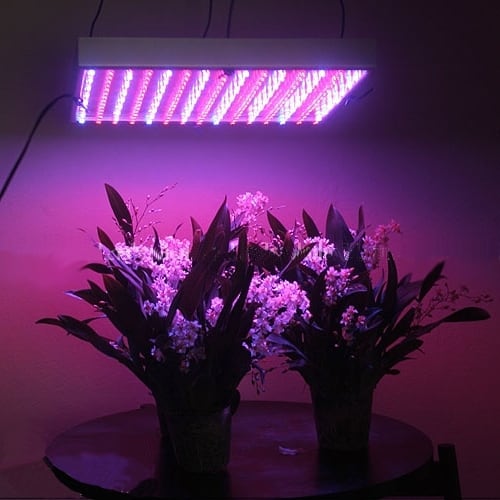
Just like Hue and LIFX bulbs, smart grow lights have app control and are even compatible with Amazon Alexa and Google Assistant for voice control. This makes it possible to turn the grow lights on and off remotely. Aside from that, you can also tweak features like adjusting the brightness, selecting a mode (veg/bloom/full), and setting time schedules. More importantly, through the app, you can get real-time graphs and alerts when the temperature or humidity indoors goes beyond the set threshold limit.
If you’re looking for other choices, there are high-end options that have been graded for professional cultivation like LumiGrow and Luminancity. There are also options if you want to go with grow lights that don’t have smart features or an app to go with them like BESTVA and WAKYME.
Conclusion
To end, the answer would still be that, currently, you cannot use Hue and LIFX bulbs for hydroponics. With some of their success stories, however, we have reason to believe that there is no harm if you use these bulbs alongside grow lights that are actually made for plants. It is then also important to note that there are still no guidelines as to what kind of plants Hue and LIFX bulbs can really be used as a light source for.
Thus, you cannot yet depend on them to ensure the healthy growth of your plants. Simply said, if growth is what you are looking for, the short answer is get separate grow lights (and use them with Hue and LIFX bulbs, if you want).
I hope you enjoyed reading this article, if you found it useful then share it with other people who might be interested in learning more about hydroponics and smart LED bulbs!
Steve
P.S.
If you’re interested in reading more about LED lights and smart home checkout some of the other houshia categories including:

